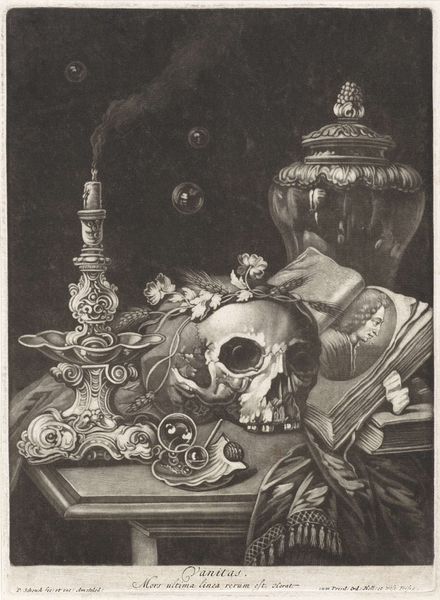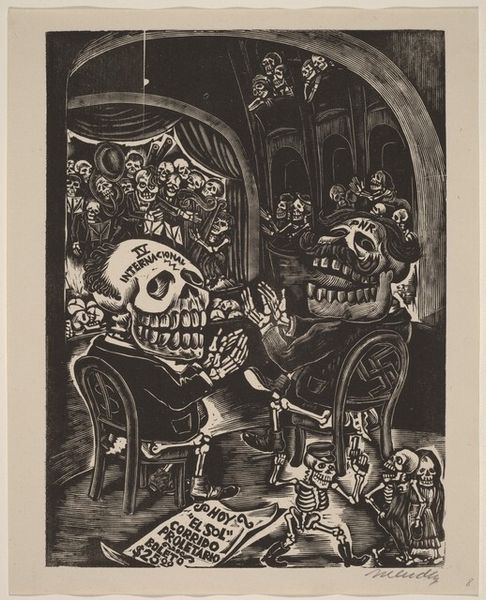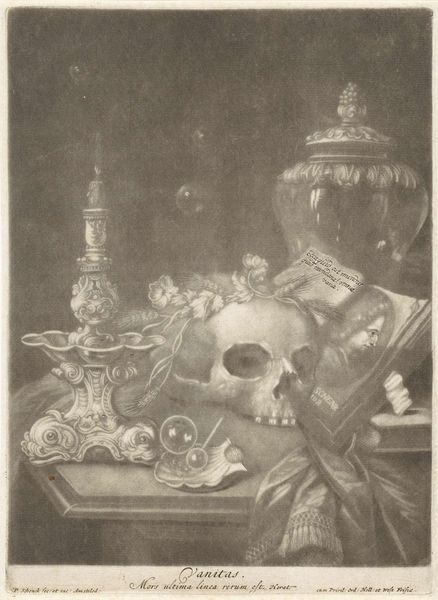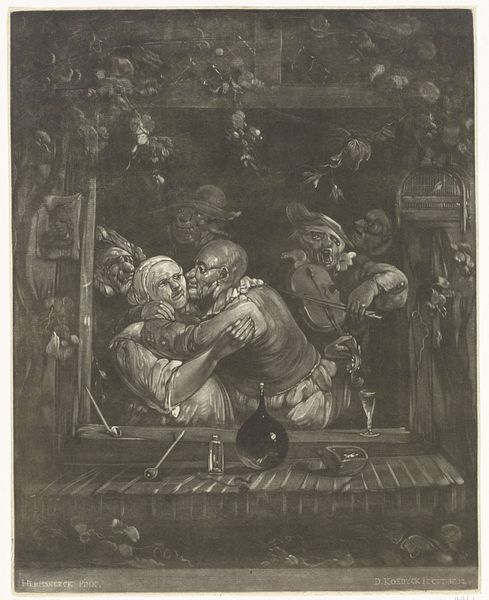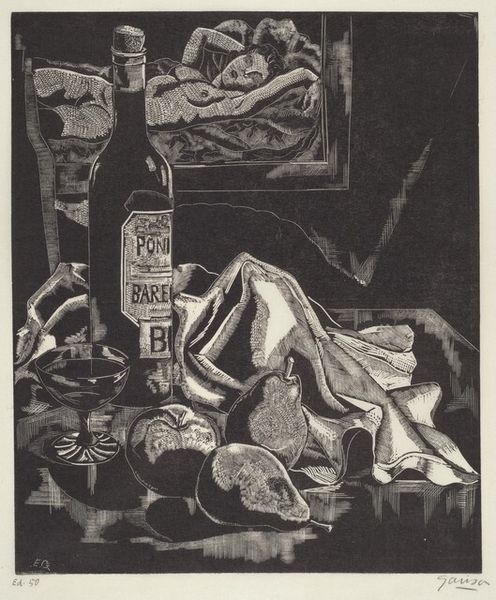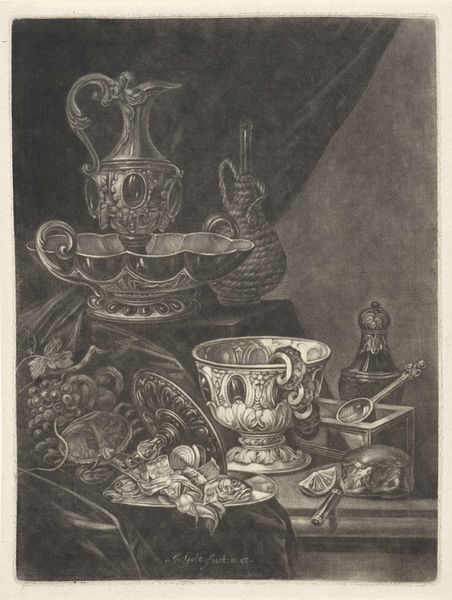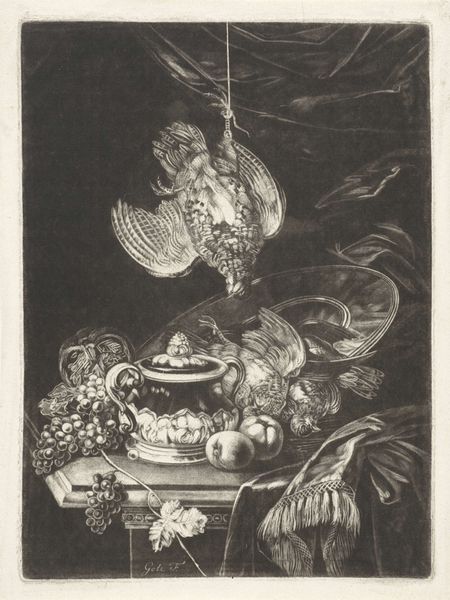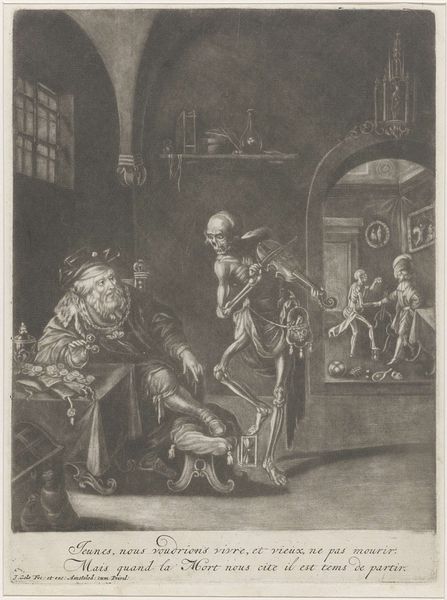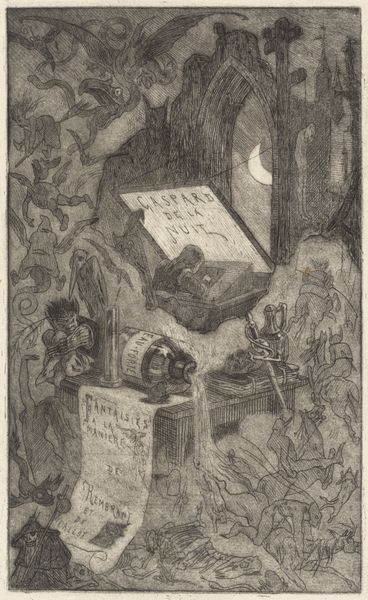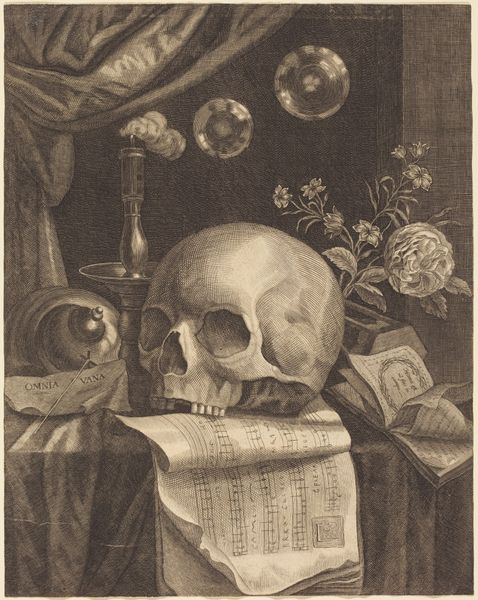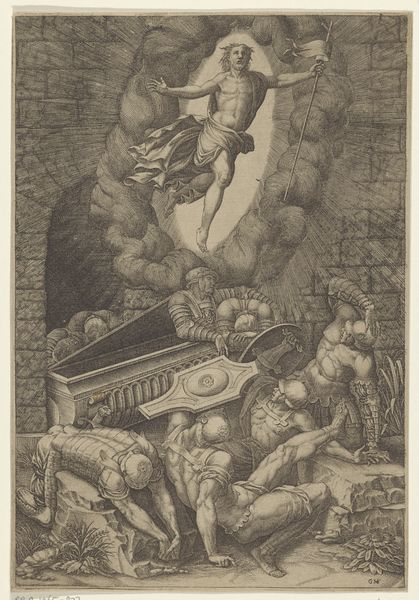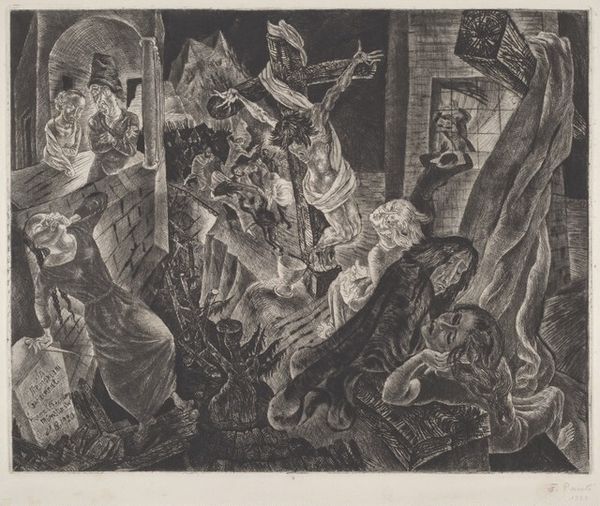
engraving
#
allegory
#
baroque
#
dutch-golden-age
#
old engraving style
#
form
#
vanitas
#
chiaroscuro
#
line
#
history-painting
#
engraving
Dimensions: height 243 mm, width 181 mm
Copyright: Rijks Museum: Open Domain
Curator: The darkness is almost palpable in this work, isn’t it? Editor: It is. The chiaroscuro certainly amplifies the overall somber mood, an effective, dramatic use of light and shadow. Curator: Indeed. What we’re looking at is a "Vanitasstilleven met een schedel en een viool" – a Vanitas Still Life with a Skull and Violin – an engraving made sometime between 1670 and 1713 by Pieter Schenk. It is part of the Rijksmuseum's collection. The medium is engraving, fitting for its detailed and reproducible nature. Editor: Right. You can trace the dense network of lines, see how Schenk builds form through hatching and cross-hatching. The stark contrast heightens the memento mori aspect. Curator: Precisely. Consider how prints like this would have circulated widely, reminding viewers, regardless of social standing, of their mortality. It makes the iconography—the skull, the extinguished candle, the musical instrument—particularly potent, accessible through a kind of mass production. Editor: The arrangement itself draws the eye in. The diagonal of the violin opposed to the angle of the skull; it’s all quite deliberate in leading the viewer to contemplate each symbolic element, almost as an intellectual exercise. It's classically Baroque in composition. Curator: Schenk highlights how fleeting the pleasures of life are. But by making them objects of production, and distributing the work, does he inadvertently solidify them as desired objects? Consumption and value are key. Editor: Perhaps, but consider the tonal gradations. The very subtle changes in line weight to describe curvature or depth--the textures. Regardless of the intent, he has undeniably crafted an effective and complex arrangement. The visual is primary, driving that message of transience home. Curator: Agreed. Even considering it in its social milieu, this piece offers a window into how anxieties about mortality were circulated and consumed, much like art still does today. Editor: Ultimately, we each engage with these symbols of death and beauty using our own analytical framework. The enduring legacy of artworks like these lies in that continued interpretation.
Comments
No comments
Be the first to comment and join the conversation on the ultimate creative platform.
